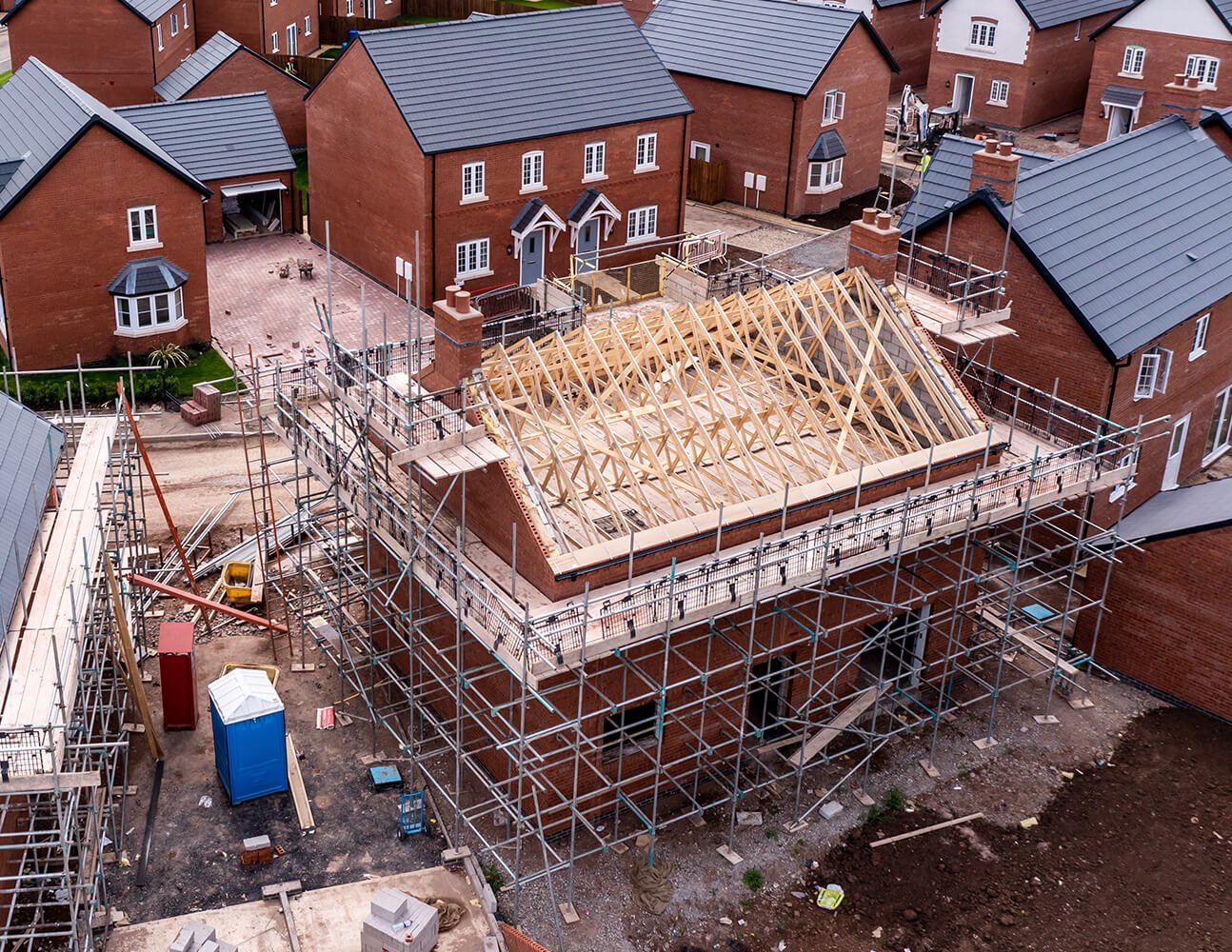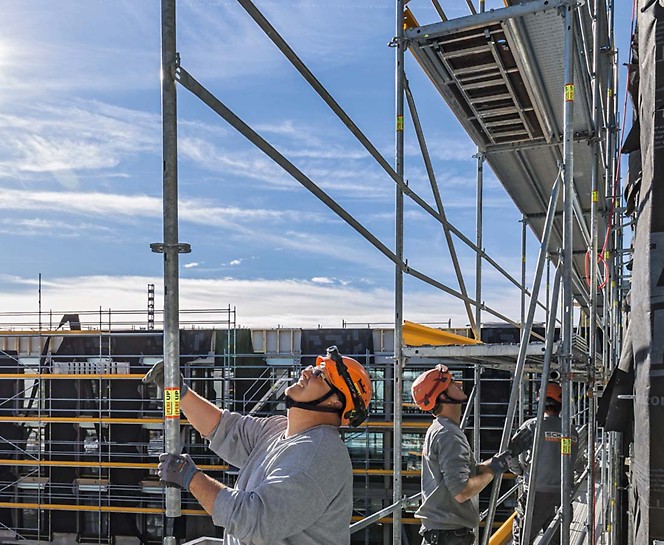Local Scaffolding Company Providing Reliable Services Throughout Surrey
Local Scaffolding Company Providing Reliable Services Throughout Surrey
Blog Article
Discovering the Numerous Kinds of Scaffolding Made Use Of in Construction Jobs
The construction industry counts greatly on different kinds of scaffolding to meet specific task demands, each offering distinctive advantages and applications. Standard framework scaffolding supplies a tough structure for general jobs, while put on hold scaffolding is necessary for work on skyscraper structures.

Standard Structure Scaffolding
Typical framework scaffolding is among the most commonly made use of approaches in the building and construction industry as a result of its toughness and adaptability. This system consists of upright and straight frameworks that are assembled to develop a steady platform for products and employees. The main elements consist of upright messages, horizontal journals, and angled braces, which with each other supply a strong framework that can support considerable lots.
Among the key advantages of conventional framework scaffolding is its versatility to different construction projects, ranging from household buildings to huge commercial structures. The modular style allows for very easy setting up and disassembly, making it effective for both long-lasting and temporary jobs. In addition, the system can be tailored in height and width, suiting various building designs and site problems.
Security is paramount in scaffolding applications, and typical framework systems are outfitted with guardrails and toe boards to avoid falls and make sure employee security. Routine inspections and adherence to safety and security laws are important in keeping the stability of the scaffold (Scaffolding). Overall, typical structure scaffolding remains a basic option in the construction market, providing a dependable platform for labor and enhancing total job efficiency

Suspended Scaffolding
Suspended scaffolding uses a distinct remedy for construction jobs that call for accessibility to raised surfaces, specifically in circumstances where traditional frame scaffolding may be impractical. This sort of scaffolding is generally put on hold from the roof covering or top levels of a framework, making use of a system of sheaves, systems, and ropes to develop a functioning space that can be adjusted to numerous elevations.
One of the key advantages of suspended scaffolding is its versatility. It can be conveniently repositioned or reduced to suit changes in construction requirements, making it excellent for jobs such as home window setup, façade work, and upkeep on skyscrapers. Furthermore, the marginal footprint of suspended scaffolding permits for much better use of ground area in metropolitan atmospheres, where room is frequently restricted.
Safety is a vital factor to consider in the usage of suspended scaffolding. Correct rigging and anchoring systems have to be utilized to guarantee stability and protect against mishaps. Operators must additionally be learnt the risk-free use this tools. Overall, suspended scaffolding gives a efficient and reliable remedy for accessing hard-to-reach areas in various building situations, enhancing both productivity and safety on website.
System Scaffolding
System scaffolding, typically considered as a contemporary solution in the scaffolding market, contains pre-engineered components that can be swiftly assembled and adapted for various building projects. Scaffolding. This sort of scaffolding is characterized by its modular layout, which enables flexibility and effectiveness on job sites, accommodating various heights and architectural demands
Generally made from high-strength steel or light weight aluminum, system scaffolding provides enhanced sturdiness and stability. The components include upright posts, horizontal journals, and diagonal braces, which adjoin firmly, making sure a robust framework. The layout frequently includes standardized fittings, streamlining setting up and disassembly procedures, consequently lowering labor time and expenses.

Rolling Scaffolding
Moving scaffolding is a versatile choice to conventional fixed scaffolding, made for mobility and simplicity of use on building websites. This type of scaffolding consists of a platform supported by structures with wheels, enabling workers to easily move it as needed. The flexibility function substantially enhances productivity, as it reduces downtime connected with taking apart and assembling fixed scaffolding.
Normally built from light-weight materials such as aluminum or steel, rolling scaffolding provides a strong yet portable option for tasks i thought about this needing regular repositioning - Scaffolding. It is specifically beneficial in jobs such as paint, drywall setup, and electrical work, where accessibility to numerous heights and areas is necessary
Security is vital in rolling scaffolding layout, with functions such as securing wheels to avoid unplanned movement when being used, and guardrails to safeguard workers from falls. Additionally, lots of models are adjustable in height, accommodating various task demands.
Cantilever Scaffolding

The style of cantilever scaffolding generally includes making use of arms or brackets anchored to a structure or framework, making it possible for the system to prolong outside safely. Security is critical; thus, these scaffolds have to be engineered to hold up against numerous loads and ecological conditions. Routine assessment and upkeep are important to guarantee architectural stability and worker security.
Cantilever scaffolding is favored for its convenience and efficient use room, making it a popular selection in urban environments where room constraints are usual. In addition, it assists in less complicated accessibility to high altitudes, inevitably contributing to the general efficiency of construction tasks. Similar to all scaffolding types, correct training and adherence to safety criteria are critical for scaffold key workers using cantilever scaffolding.
Verdict
Traditional frame scaffolding supplies security, while put on hold scaffolding supplies flexibility for elevated jobs. System scaffolding facilitates quick assembly, and rolling scaffolding boosts flexibility for differing job atmospheres.
Typical structure scaffolding offers a strong structure for general jobs, while put on hold scaffolding is essential for job on high-rise structures.Moving scaffolding is a flexible option to conventional fixed scaffolding, designed for mobility and simplicity of usage on building and construction websites. As with all scaffolding types, correct training and adherence to safety and security standards are vital for employees utilizing cantilever scaffolding.
Standard framework scaffolding gives stability, while suspended scaffolding supplies flexibility for raised tasks. System scaffolding facilitates fast setting up, and rolling scaffolding improves mobility for varying work atmospheres.
Report this page